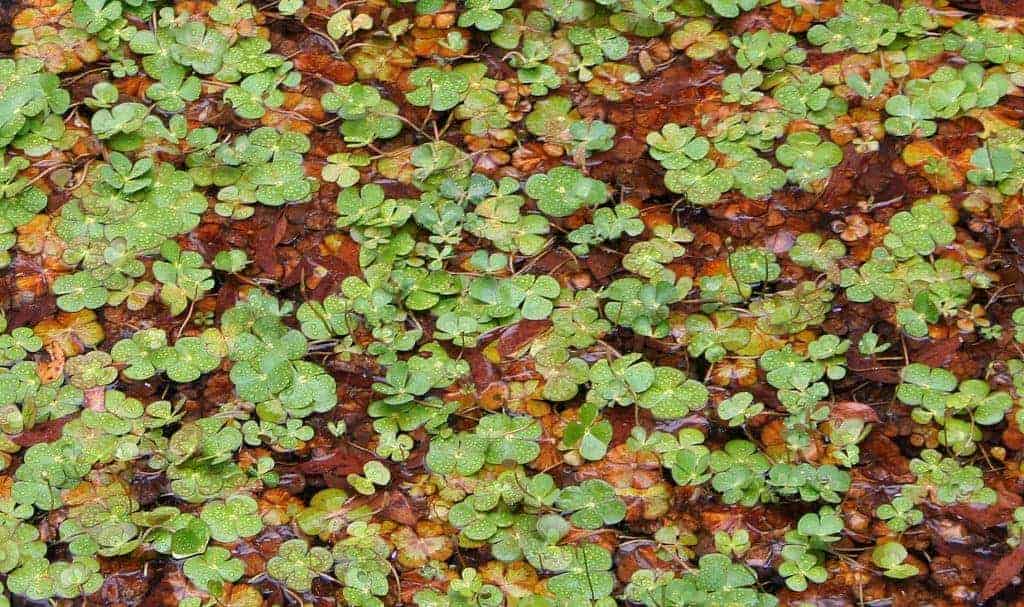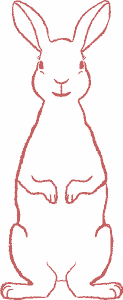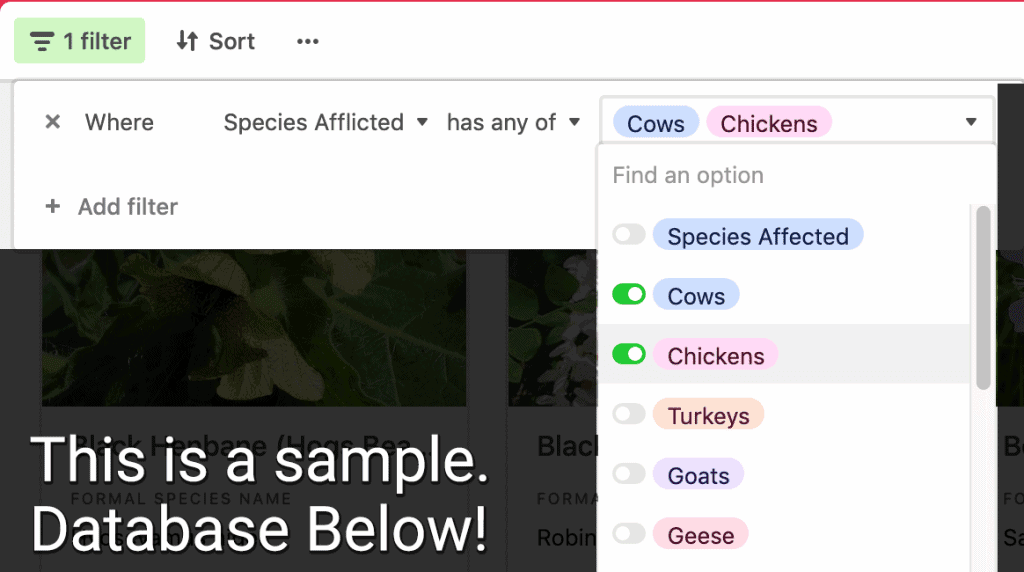
Updated May 17, 2022
This database is a sortable table of plants that are toxic to farmed animalsA species or specific breed of animal that is raised by humans for the use of their bodies or what comes from their bodies., compiled by The Open Sanctuary Project.
In this database, you’ll find a list of plants, the animal species likely afflicted by them, a list of potential symptoms, the toxicity cause of the plant, and a distribution listing searchable by region.
To learn more about other toxic or harmful things to protect individual species against, check out our species-specific “Things That Toxic To” resources.
A Robust Starting Point
As with all toxic plant databases, please be aware that while we endeavor to include as many plants as are known to be toxic to farmed animals in this database, this list should be used for reference only and may not have every plant toxic to every species. Consider consulting with your local agricultural extension to determine if there are any plants in your region particularly to be wary of.

RabbitUnless explicitly mentioned, we are referring to domesticated rabbit breeds, not wild rabbits, who may have unique needs not covered by this resource. List Under Construction!
Just a note that our rabbit list within the Global Toxic Plant Database is undergoing construction. Please do not take this list to be suitable for rabbit safety until this message is removed.
Using The Database
While you can click through individual plants in this database to see more information, this database can be easily filtered to sort out plants that are irrelevant to your search. Use the filter button in the top left corner of either view to quickly sort the data.
Using The Database Filters
Above, you can see that you can easily add an “Animal Species Afflicted” filter and toggle the species you’re interested in finding information for. If you have a population of multiple species, we suggest using the “has any of” filter, which will show all plants that afflict either species in the list but sort out any plants that don’t afflict any of the selected species.
And here, we’ve added a filter (using the + Add filter button) to also only search for plants native or introduced into Australia (in addition to species afflicted). Currently, the system supports searching by states in the United States, provinces in Canada, and countries. Some countries are further filterable by region- see the “Plant Distribution” column of some listings to see if your country is further sorted by region.
The Global Toxic Plant Database- Photo View
Grid View
Is The Database Not Showing Up Above?
If the database isn’t embedding properly in your web browser, check out the direct link to it here!
Acknowledgments
This database is a compilation of a large number of sources. Potential symptoms are sourced from:
- The Colorado State University Guide To Poisonous Plants
- Horse DVM
- Poultry DVM
- The Ontario Ministry Of Agriculture
- Washington State Department Of Agriculture
- Ohio State University
- The University Of Arkansas
- The Cornell Department Of Animal Science
- The Merck Veterinary Manual
- The Vermont Llama And Alpaca Association
- The Canadian Poisonous Plants Information System
- The US Department Of Agriculture
- The FDA Poisonous Plant Database
Plant Distribution information is sourced from the Royal Botanic Garden. Photo credits can be found with each plant, though they are all licensed either through Creative Commons, GFDL, or are Public Domain. If you are the owner of a photo and you would like it removed, please contact us.










